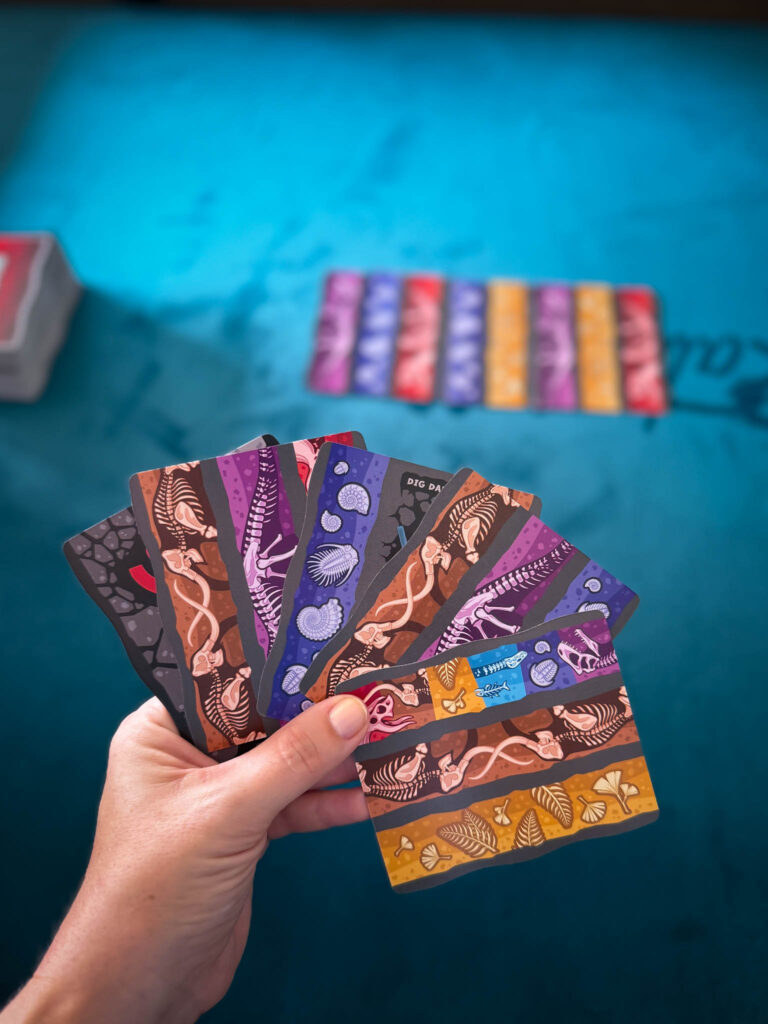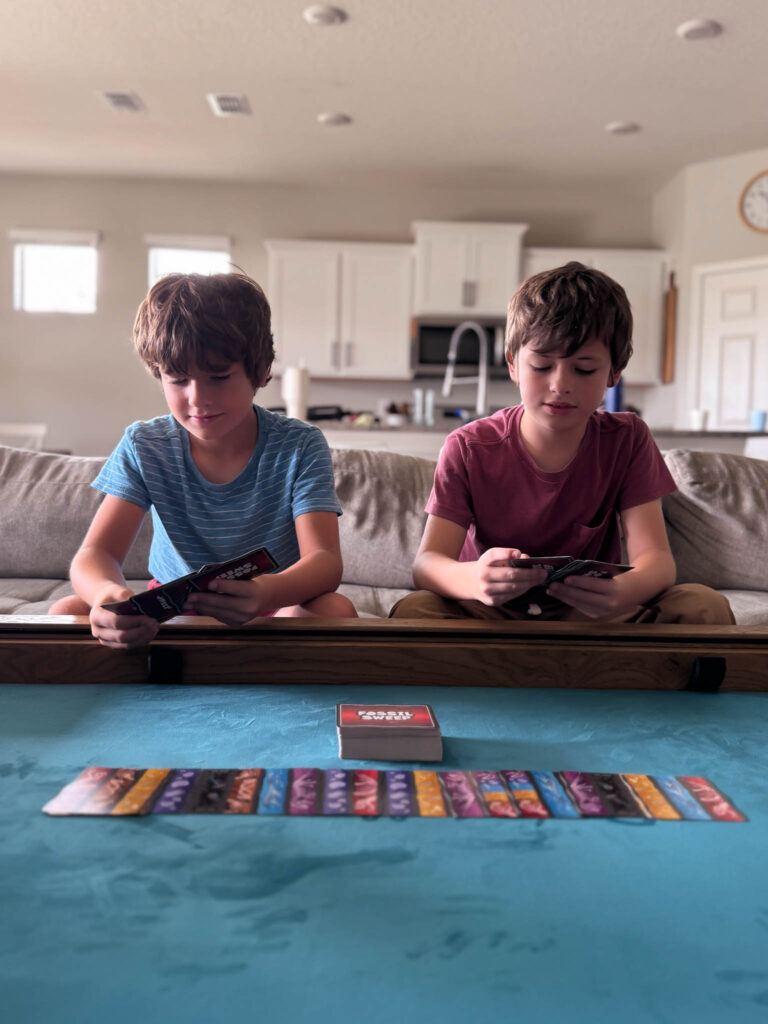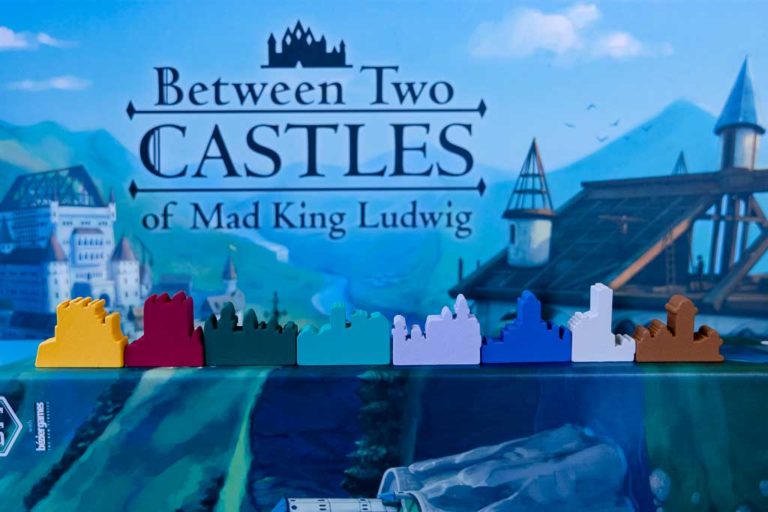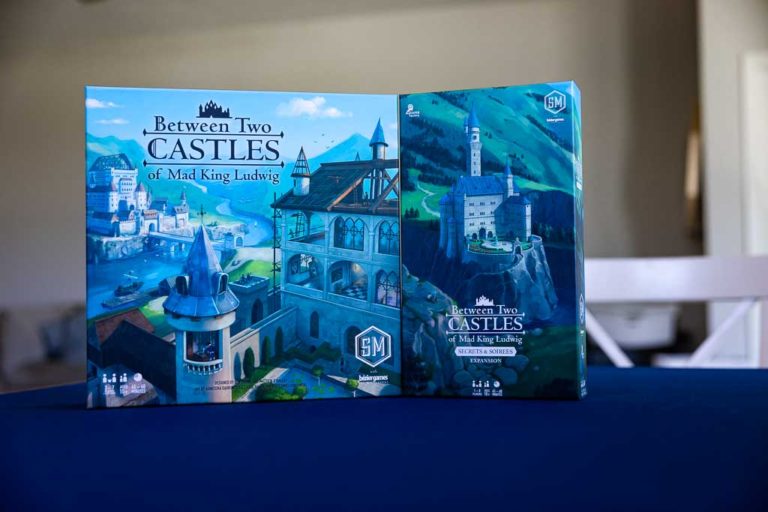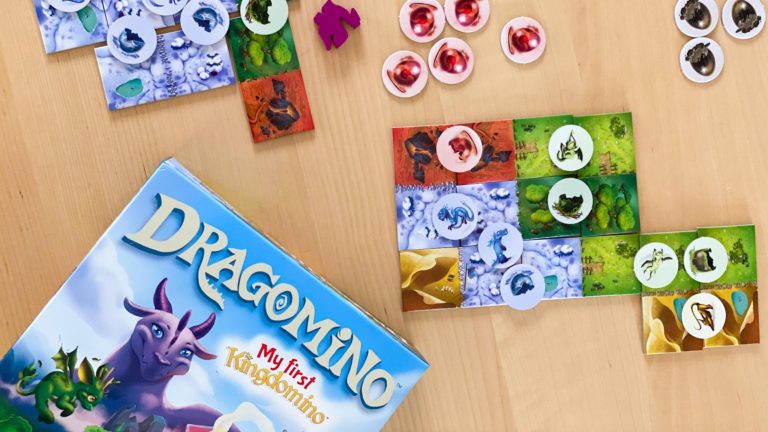This post is sponsored by SimplyFun.
As a homeschool mom, one of my missions is to find ways to make learning fun for my kids. Board games have been a huge part of that and we add to our educational gaming library each year.
Fossil Sweep is our latest addition!
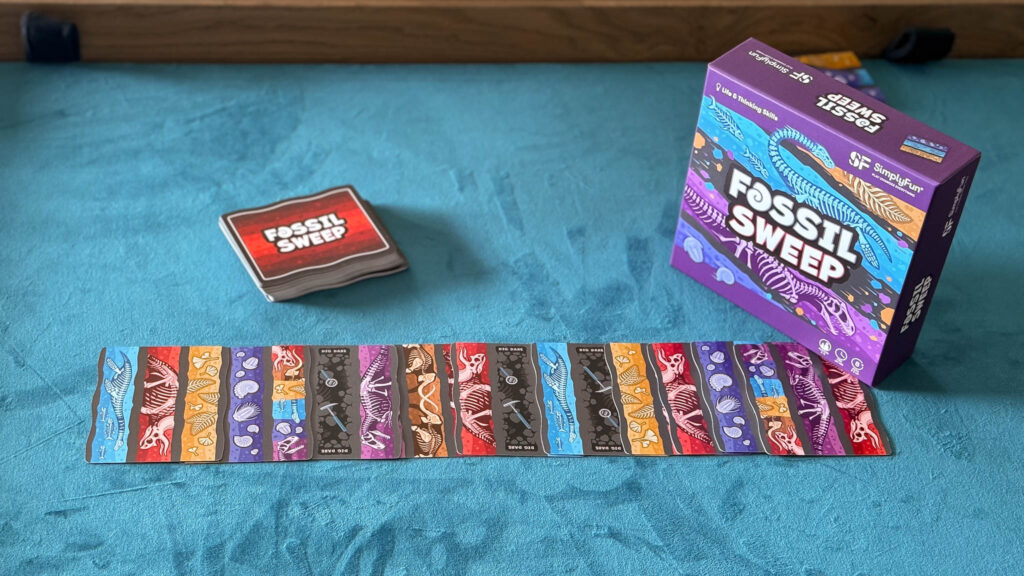
How to Play Fossil Sweep
This is a quick pattern matching game where you’ll try to play all the cards from your hand by matching their patterns to those in the dig site.
Playing in turn, players will play a card from their hand and overlap matching fossil layers on the outside edges of the dig site. Each fossil card has three layers and the more layers you can match the better.
Match one layer and play passes to the next player. But if you match two fossil layers on your card to two layers in the dig site, the player to your left must randomly select one of the remaining cards in your hand. Matching all three layers sees both the players on your left and your right selecting cards from your hand.
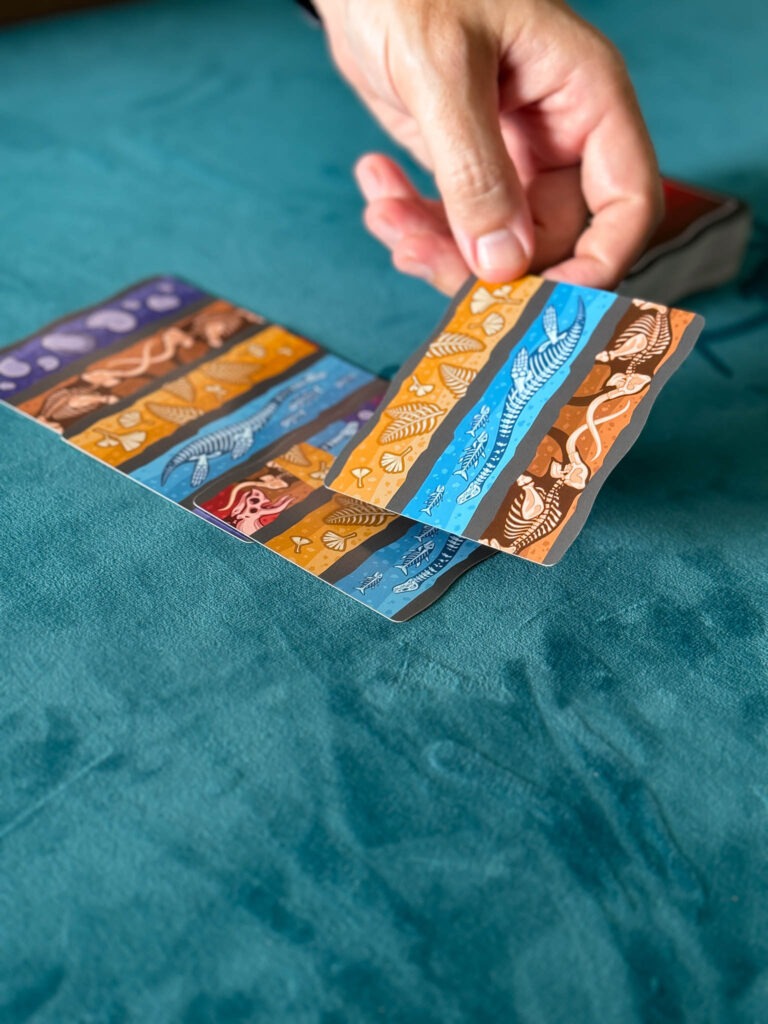

There are also cards called Dig Dares that players can use strategically to impact others. When a player plays a Dig Dare card, the player to their left must play a card that matches the outside edge of the Dig Dare. If they can, great! If they cannot, they must take three cards from the end of the dig site into their hand.
The eponymous Sweep cards of Fossil Sweep are also available to players. These cards end the round by sweeping away the dig site. Players must lay any remaining cards in their hand into their “lost” pile.
Players will continue adding to their lost pile any cards they were unable to play from round to round. Each card counts against players differently depending on if it’s a fossil card, dig dare, or sweep card.
At the end of the game, the player with the fewest points in their lost pile from their cards wins.
Strategy Decisions in Fossil Sweep
Looking for all those patterns can lead to some fun strategy decisions.
This is where the simple rules benefit the game really well. Kids are able to hone in on observing the dig site and look for ways to match the fossil layers on their cards. No one is worried about remembering a ton of specific rules. With each new card added to the dig site, players are reevaluating all the best ways to use their cards to match the patterns.
It’s not as simple as just making matches though. Kids really have to be aware of what cards their using knowing that it is going to potentially help the next player.
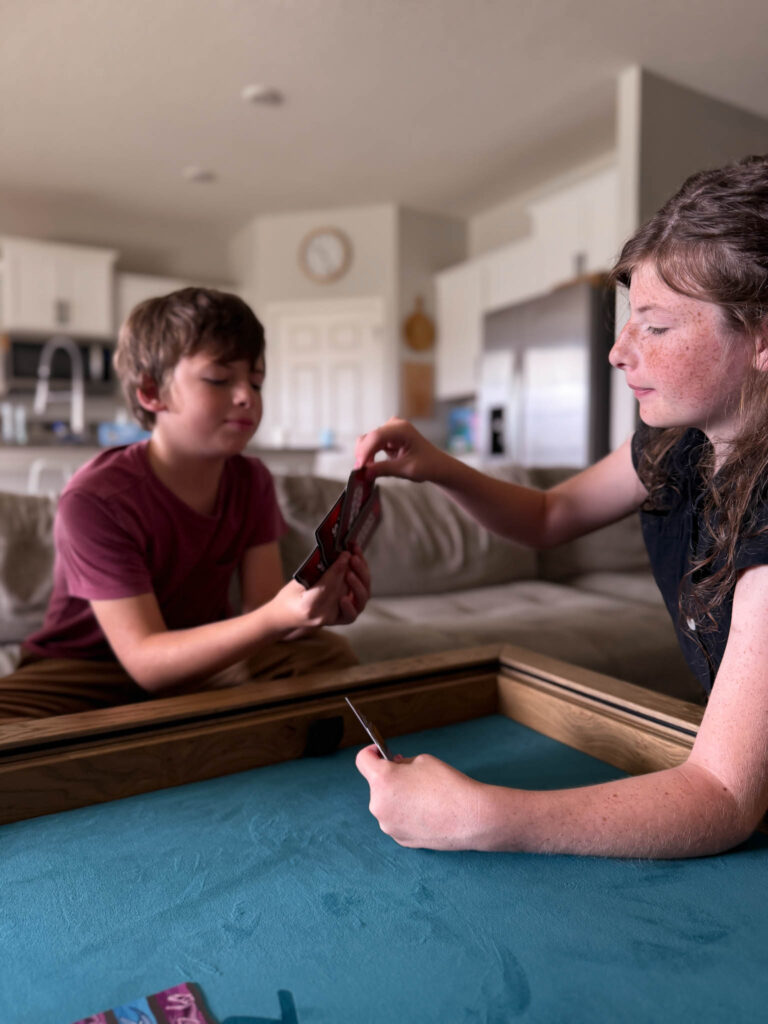
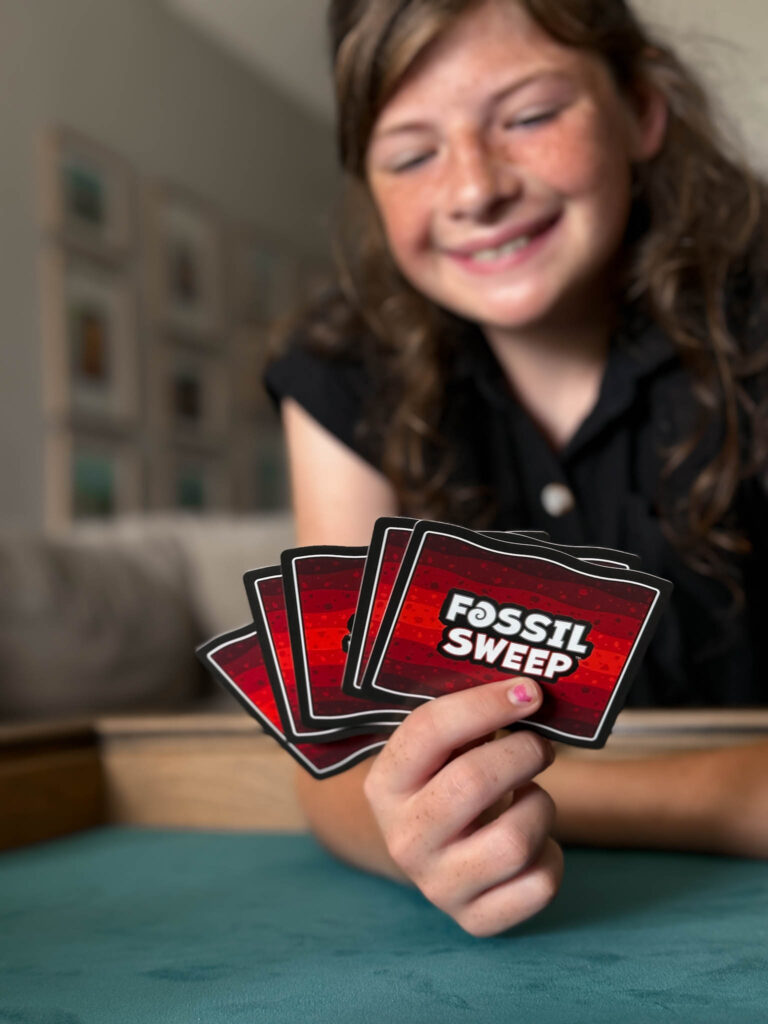
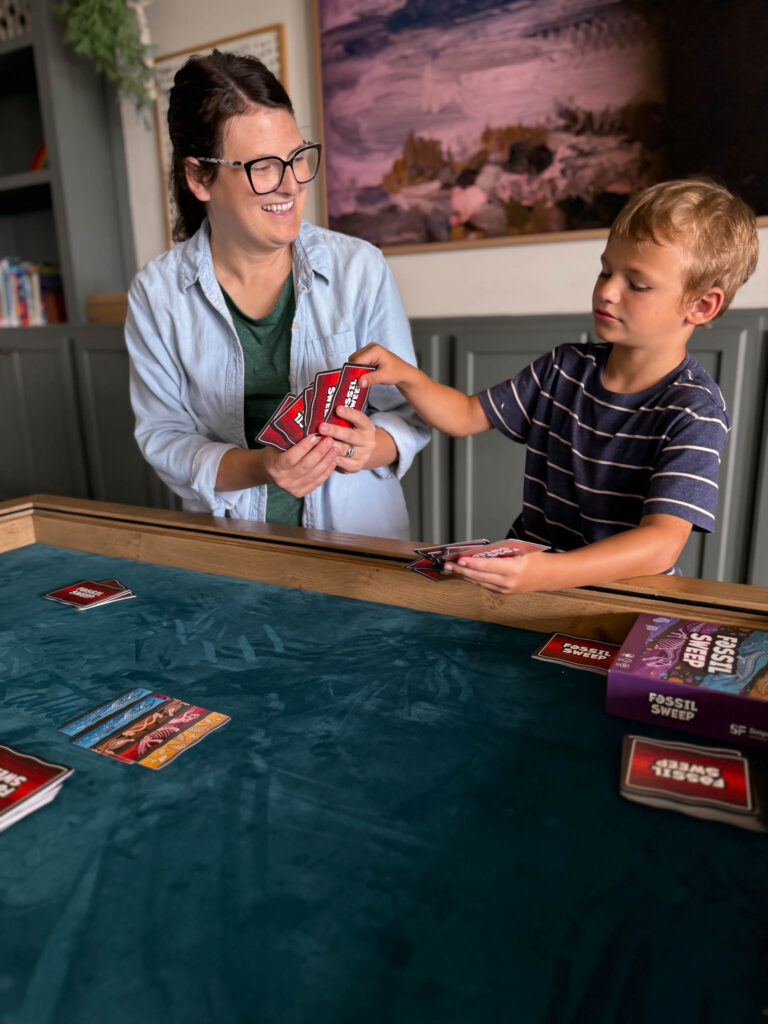
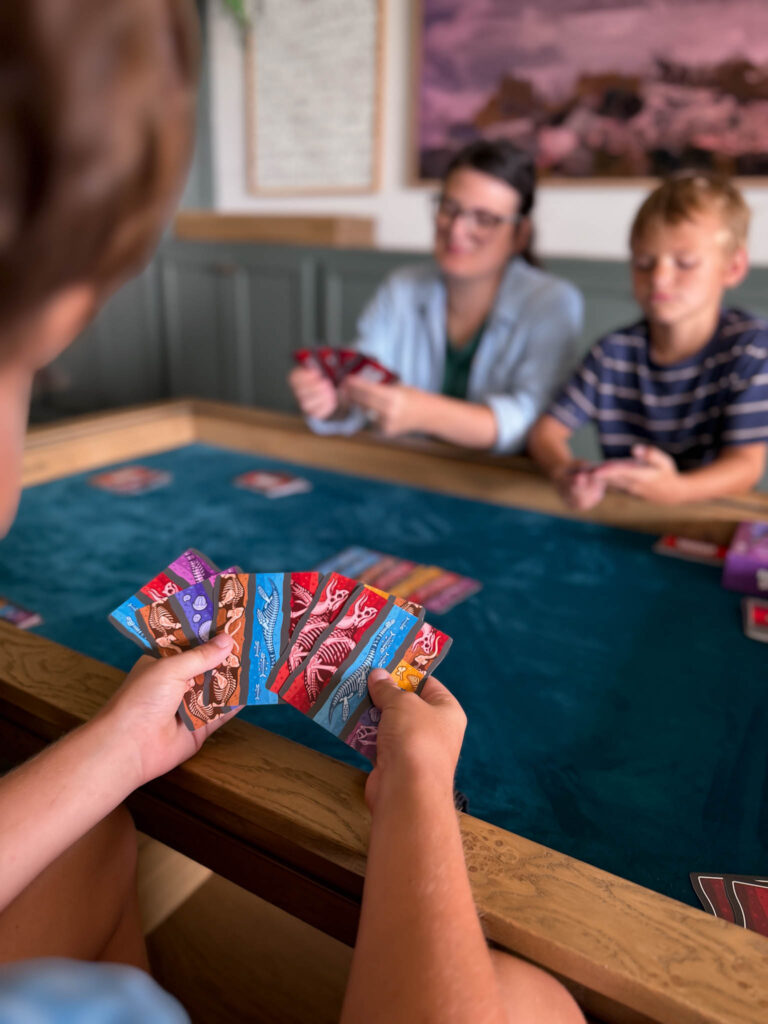
This will lead to strategy decisions such as making sure to keep wild layers inside the dig site and not on the outside. Our kids quickly learned that if they placed a card into the dig site such that it left a wild layer on the outside edge, it often lead to the next player making a two or even three fossil layer match.
Keeping an eye on how others are doing also plays into knowing when to use a dig site card.
There are risk vs reward calculations to consider with these, because if you use them too early the likelihood of your opponent having a card that matches is greater than if you play them when they only have a card or two left. But if you save it in your had and are unable to play it before someone goes out, then it counts against you in the end.
How I Would Use Fossil Sweep in Homeschool
I see a lot of fun potential to include Fossil Sweep in a science unit on fossils.
After first exploring the concept of fossils, what they are and how they’re formed, I’d expand upon how fossil layers tell a story about Earth’s history. We’d discuss how these layers are formed and how paleontologies excavate, preserve, and use these fossil layers to date their findings.
For a hands on activity, I’d use an excavation kit to let kids take on the role of paleontologists and carefully excavate their own fossils.
Fossil Sweep includes a poster which details each fossil in the game with included information that can be used to help identify fossils and place a physical representation next to the game’s cards. Using the poster, I would have students order the fossils to show where they fall on Earth’s timeline.
To conclude the unit, I’d end with a recap and a game of Fossil Sweep! I would leave Fossil Sweep out and available for the next few days or weeks to help encourage continued play and engagement with the concepts learned.
Bring home a copy of Fossil Sweep for your home here!
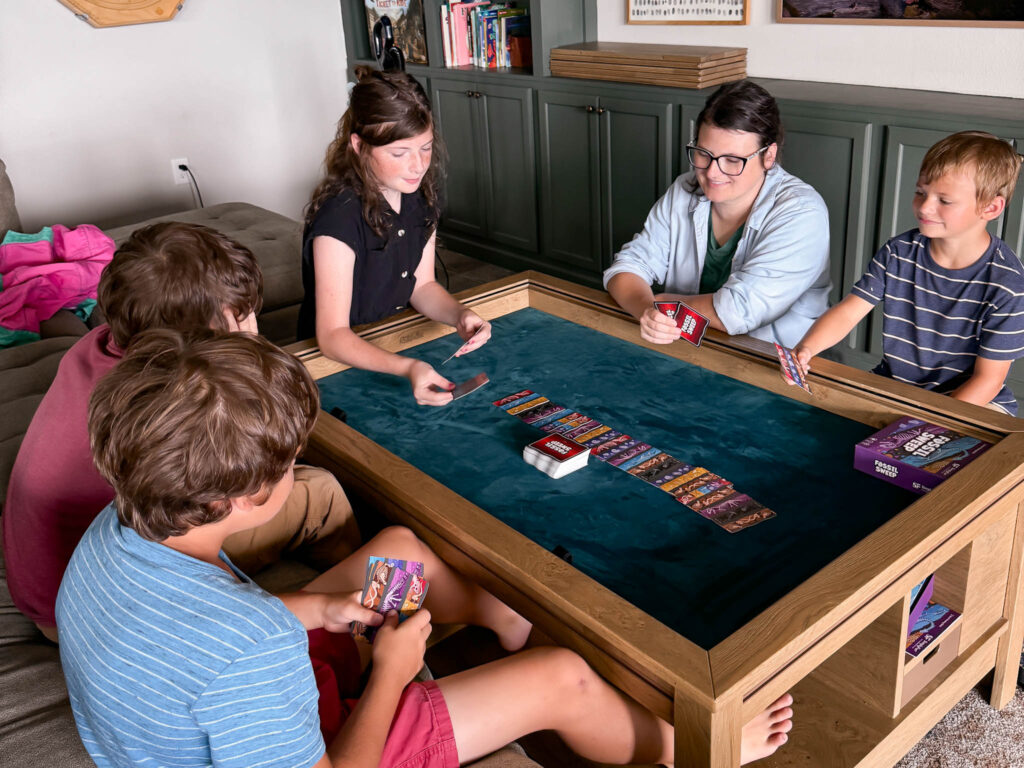
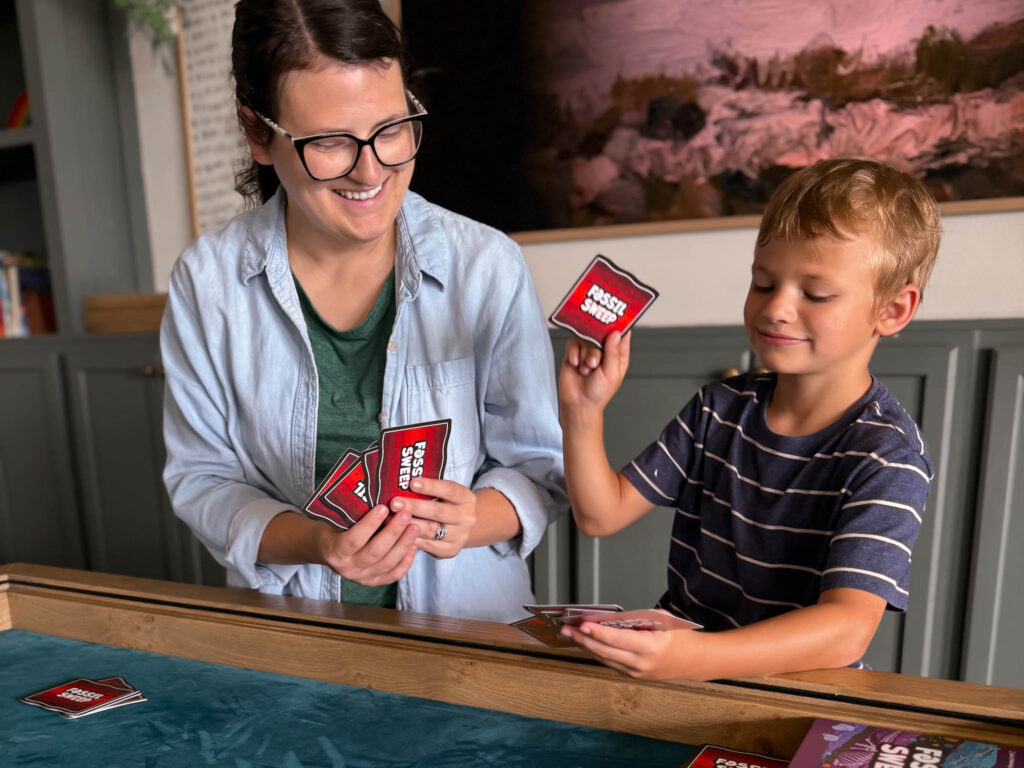
A Special Offer on Our Favorite SimplyFun Games!
SimplyFun has become a go-to for me over the years. I love the intentional effort placed on the games they publish. They truly make the best educational games where the goal of learning various concepts doesn’t come at the sacrifice of interesting game play.
As the new school year approaches, I asked if we could offer a special discount during our Summer Camp program just for our community here and I was thrilled when SimplyFun said yes!
We’ve curated a list of our tried and true favorites that we use in our home to help facilitate both learning and fun.
I’ve included my favorite language arts games for developing readers, math games for making math facts fun, and some strategy games to really get those minds thinking critically!
From now until July 15th, you can save 10% off these select games by ordering through this link.
(One use per user.)
I hope this can help you get any of the games you’ve been eyeing and start prepping for a great school year ahead!
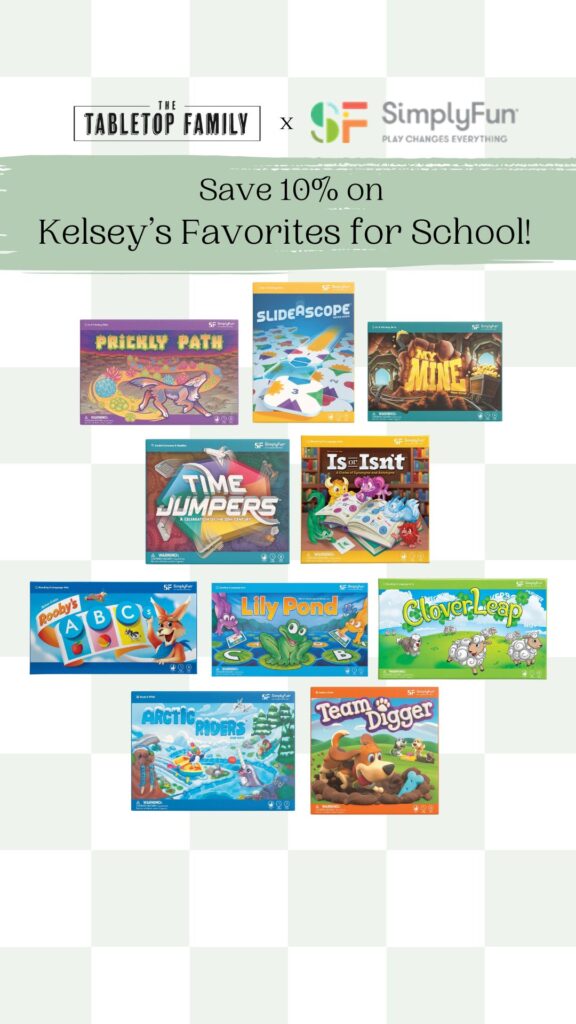
If you enjoyed this post on Fossil Sweep, you may also enjoy:
SlideAscope Review
Arctic Riders: An Excellent Math Game for Elementary Students
Games that Help Boost Reading Skills

